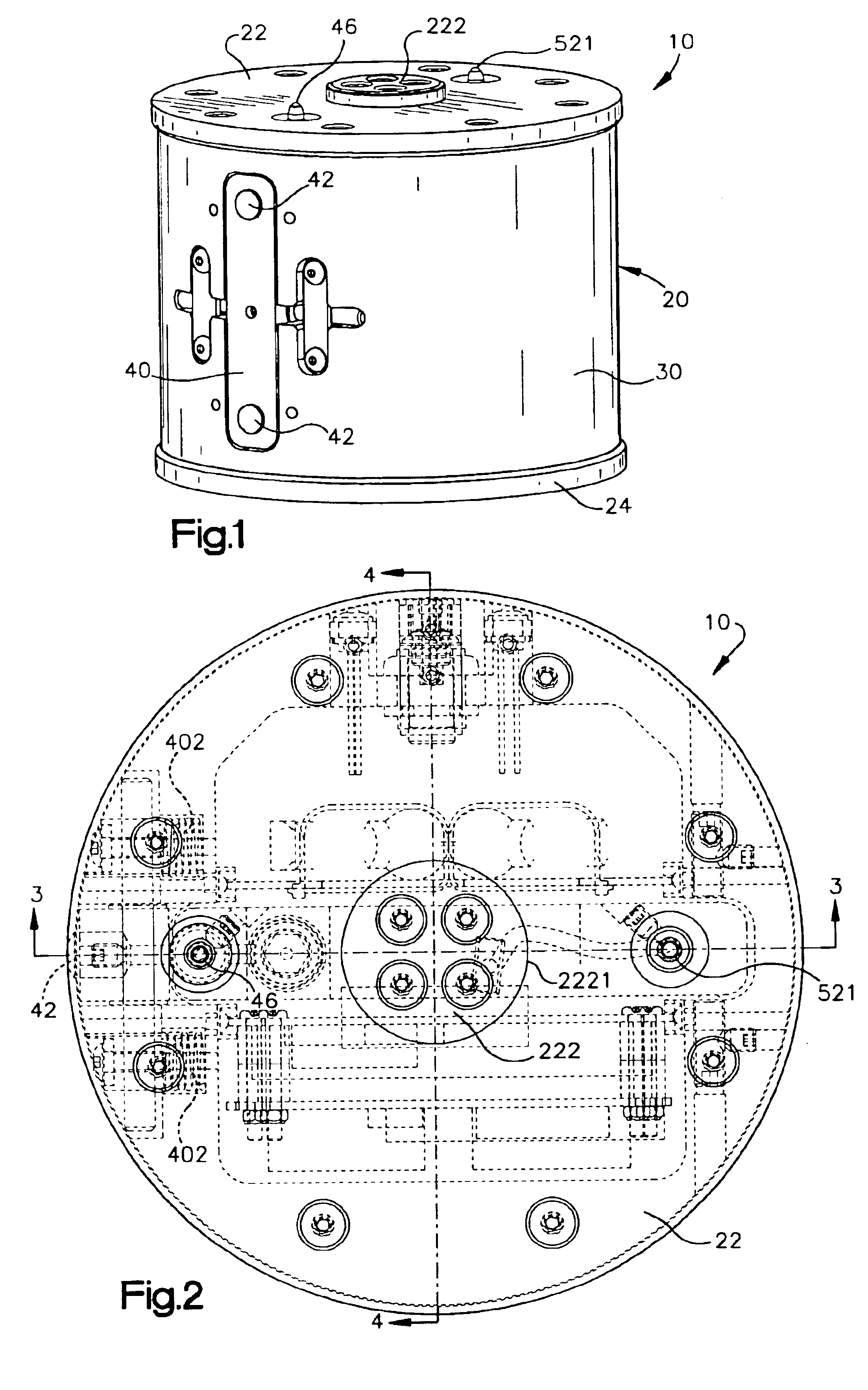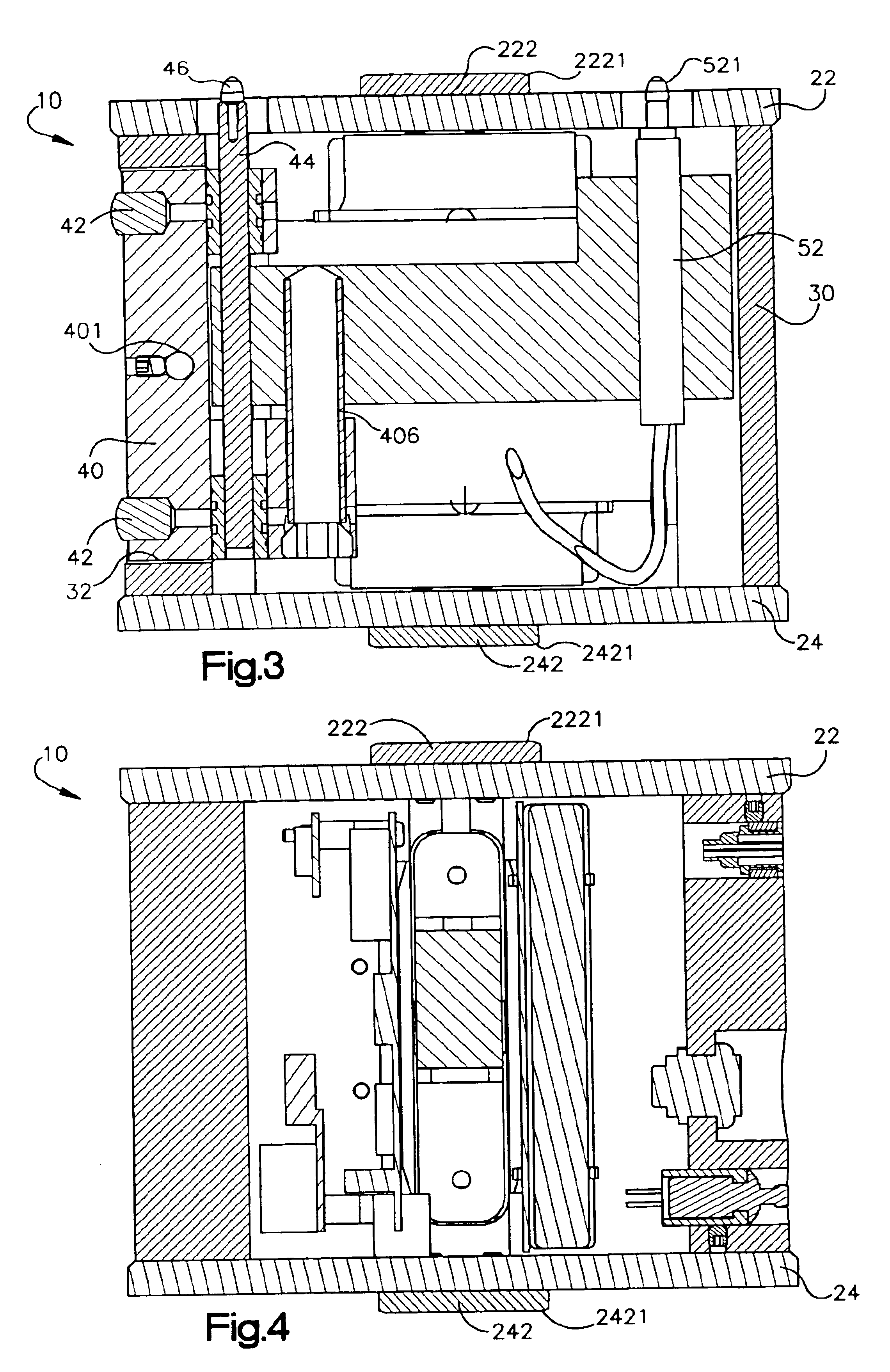Devices and methods for applying known resistance loads and measuring internal angles of gyration in gyratory compactors
a compactor and gyratory technology, applied in the direction of mechanical means, instruments, manufacturing tools, etc., can solve the problems of inability to use typical sized specimens, molds used in many existing sgc models do not have enough volume to hold a typical size material specimen, and account for movement, so as to reduce the amount of preparation and improve operator safety and convenience. , the effect of reducing the potential for debris
- Summary
- Abstract
- Description
- Claims
- Application Information
AI Technical Summary
Benefits of technology
Problems solved by technology
Method used
Image
Examples
Embodiment Construction
[0023]FIGS. 1-5 illustrate a first embodiment of an internal loading and internal gyration angle measurement device of the invention, indicated generally at 10. The device 10 in this particular form has a generally cylindrical body 20 which is generally configured to fit within a cylindrical mold of the type used in a gyratory compactor, such as a Superpave gyratory compactor. The body 20 of the device 10 can of course take different shapes and forms in relation to the mold in which it is to be used as described. In this embodiment, designed for use in a cylindrical mold M, as shown for example in FIG. 5, of the type used in Superpave gyratory compactors, the generally cylindrical body 20 is defined by circular end caps 22 and 24 with a wall 30 which extends between the end caps 22 and 24. Although shown in cylindrical form, the form of the wall 30 is not necessarily dictated by the form of the mold M, however in this instance the outside diameter of the wall 30 of the body is just ...
PUM
| Property | Measurement | Unit |
|---|---|---|
| Angle | aaaaa | aaaaa |
Abstract
Description
Claims
Application Information
 Login to View More
Login to View More - R&D
- Intellectual Property
- Life Sciences
- Materials
- Tech Scout
- Unparalleled Data Quality
- Higher Quality Content
- 60% Fewer Hallucinations
Browse by: Latest US Patents, China's latest patents, Technical Efficacy Thesaurus, Application Domain, Technology Topic, Popular Technical Reports.
© 2025 PatSnap. All rights reserved.Legal|Privacy policy|Modern Slavery Act Transparency Statement|Sitemap|About US| Contact US: help@patsnap.com



